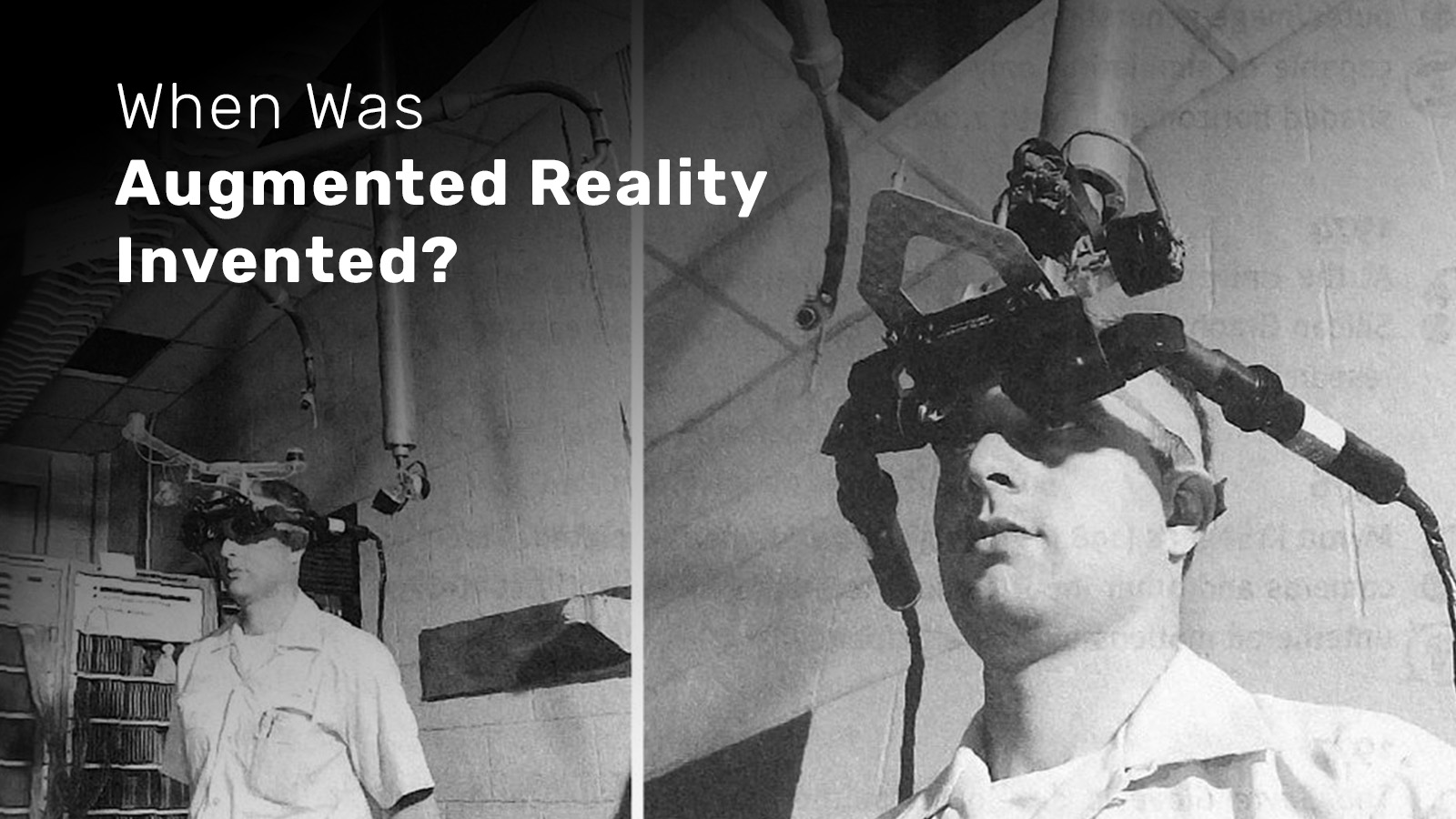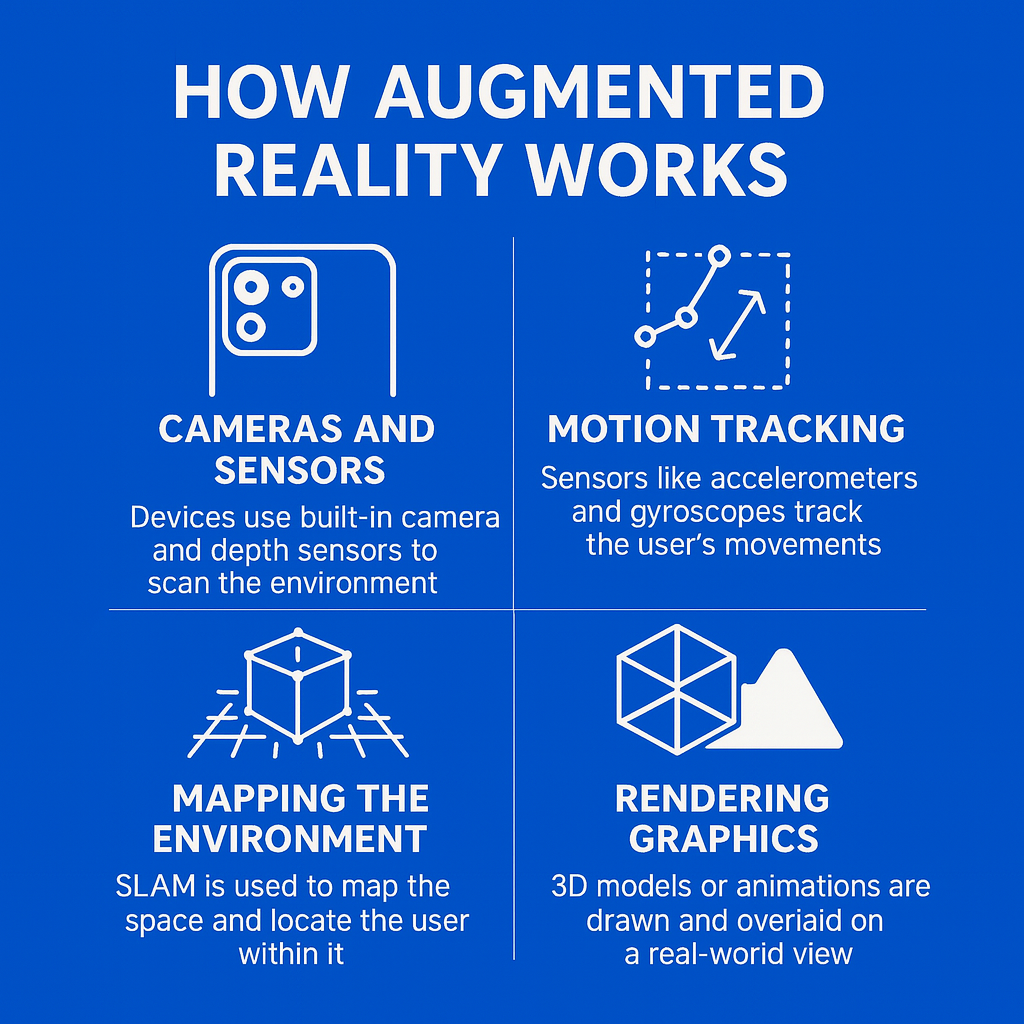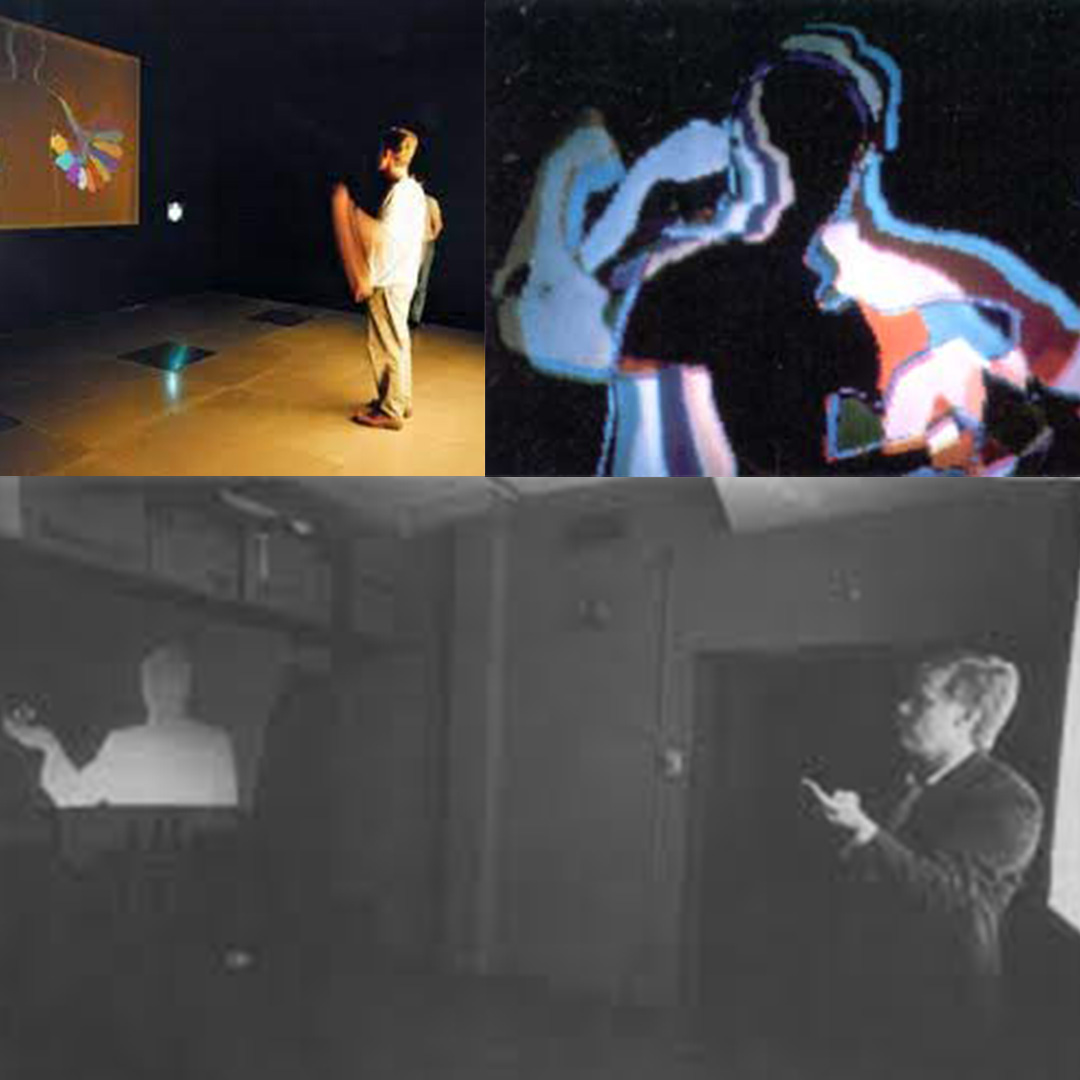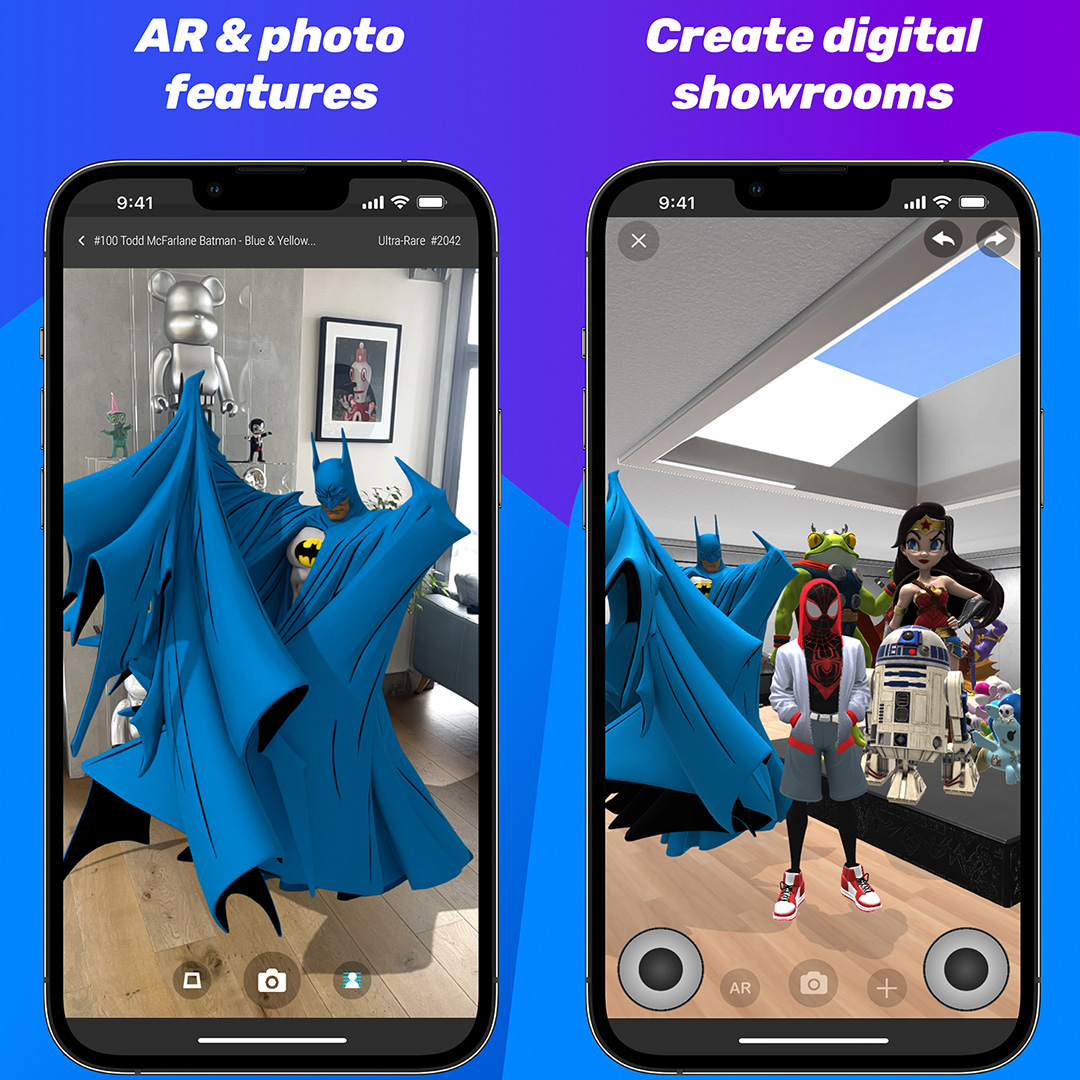
By VeVe Staff · July 25, 2025
Augmented reality first became real in 1968. That’s when computer scientist Ivan Sutherland created a head-mounted display system that projected wireframe graphics over the user’s view of the physical world.
The device was huge and had to be suspended from the ceiling. People nicknamed it the “Sword of Damocles” because it hung above the user’s head like a heavy warning. It wasn’t exactly practical, but it was a proof of concept that opened the door to something big.
The term “augmented reality” didn’t come along until 1992. Boeing researcher Tom Caudell used it to describe a system that projected digital instructions onto airplane assembly surfaces.
Workers no longer had to rely on paper manuals. The directions were right in front of them.
That decades-long stretch between the invention and the name was just the beginning. It was the first step in the augmented reality history we know today—one that’s still growing, evolving, and full of surprises.

To understand why AR is useful, it helps to know a little about how it works. AR systems rely on a few different technologies that work together simultaneously. Here are the basics:
Some AR App experiences are triggered by location, while others use specific images or objects as markers. In every case though, the goal is to align digital content with the real-world view.
This combination of sensors, mapping, and real-time graphics has been a key part of AR’s progress. It's one of the reasons augmented reality history is full of important breakthroughs.
Virtual reality and augmented reality often get mixed up, but they’re built for totally different experiences. Virtual reality takes you out of your surroundings and basically drops you into a fully digital world.
Once you put on a VR headset, everything you see is part of that new space. It might be a game, a simulation, or a 360-degree video, but the real world is completely out of view, which makes it all the more immersive!
Augmented reality, on the other hand, brings digital content into your real-world view. You’re technically still seeing your actual surroundings, but now there might be something extra layered on top, like a character, an animation, or helpful information.
AR doesn’t block your surroundings, so it works well in places where you still need to be aware of what’s around you. It also blends digital and physical spaces in a way that’s useful for both fun and work. This key difference is one reason AR has become popular in areas where people want digital help without being cut off from reality.
It’s a big part of what makes the augmented reality history unique.
Looking at the full augmented reality history helps explain how a once-niche concept grew into something people now use in everyday life. The technology traces back to the 1960s, but it didn’t start gaining real momentum until devices became a lot more powerful and software caught up.
There have been four main phases in AR’s development:
Let’s go through each of these stages.

As mentioned earlier, Ivan Sutherland’s headset from 1968 was the first real example of AR. It was mostly a technical demo, but it showed that it was possible to overlay computer graphics on top of a person’s real-world view.
In the 1970s, researcher Myron Krueger worked on a project called Videoplace. It lets users interact with virtual shapes and animations by moving in front of a screen. It wasn’t head-mounted, but it used real-time input and output, which made it feel immersive.
These early experiments laid the groundwork for everything that came after. They didn’t go mainstream, but they played a big role in the early augmented reality history.
The 1990s were an important time for AR. In 1992, the U.S. Air Force developed a system called Virtual Fixtures that used robotic arms and a headset to guide users through complex tasks. Around the same time, researchers at Columbia University built a system that showed repair instructions through a transparent display.
AR also started to show up in entertainment. A 1994 performance called “Dancing in Cyberspace” included live actors moving around digital props. In 1998, TV broadcasts of football games began showing the yellow first-down line on the field—one of the first widely-seen uses of AR in sports.
Each of these examples added something new. As more people started seeing the potential, augmented reality history picked up speed.
The 2000s were a turning point for AR because mobile technology was finally getting powerful enough to support it. In 2000, a software toolkit called ARToolKit became available, making it easier for developers to build AR experiences.
By 2008, smartphones with cameras and GPS-enabled location-based AR apps were available. Wikitude, one of the first, lets users point their phone at landmarks and see information about them. In 2009, Esquire magazine printed a cover that came to life when viewed through a webcam.
AR also found a place in automotive and industrial settings. Car companies used AR to help mechanics fix engines by overlaying instructions on the parts. Some tools let factory workers see virtual labels on machinery.
This decade marked a shift from research to real-world products, and it added a lot of momentum to the augmented reality history.
Since the early 2010s, AR has become much more common. Part of this is because of advances in hardware, and part of it is because of the platforms built by big tech companies.
Apple released ARKit in 2017, and Google released ARCore around the same time. These toolkits let developers build AR apps for iOS and Android without needing custom hardware. Suddenly, anyone with a smartphone could access AR.
AR also found its way into games, retail, education, and social media. Pokémon GO became a global hit in 2016. Snapchat and Instagram started offering AR filters that let users change their appearance or place virtual objects in their surroundings.
Meanwhile, companies like Microsoft and Magic Leap introduced AR headsets that worked without being connected to a computer. These devices were aimed at professionals and allowed for more detailed and hands-free AR use.
This period has been the most active in augmented reality history, with both everyday users and industry experts adopting the technology.

One area where AR has made a big impact is in the world of collectibles. With digital collecting on the rise, especially through platforms like VeVe, augmented reality has become a powerful way to give digital items a sense of real presence.
VeVe allows fans to collect licensed 3D models of comics, figures, and artwork from some of the most iconic brands in the world. Using AR, collectors can place these digital NFTs in their actual surroundings with just a phone camera. rare comic on your coffee table. A superhero is landing on your shelf. It turns collecting into an experience you can see, share, and show off in real time.
Some physical collectibles are also starting to include AR features, but VeVe leans all the way into the digital space, in which we're adding depth, motion, and story to every piece in your collection. Learn how to bring your digital collectibles to life using our AR App.
This kind of interaction makes collecting feel more dynamic and social. It’s changing how people connect with the things they love, and it’s opening up a fresh, forward-looking chapter in augmented reality history.
Looking back at the full augmented reality history, it’s clear this technology didn’t appear overnight. It started in research labs and gradually made its way into everyday life. With each advancement, new tools and better hardware opened the door to fresh ways of interacting with the world.
“What excites me most about AR is how it transforms storytelling,” said Dan Crothers, Co-Founder and COO of VeVe. “It means digital collectibles don’t just sit in the memory bank of your device. They come to life in AR and live beyond the shelf. They animate. They react. You can place them in your world and share that moment instantly. It’s tech with purpose, and it’s only getting better.”
Today, AR is part of how we play, learn, work, and collect. At VeVe, it allows fans to bring their favorite characters, comics, and art into the spaces they live in. That simple act of placing a digital collectible on your shelf or desk has changed how we connect with the things we love.
“Some people still say, ‘You’re just selling JPEGs.’ But the moment you drop your favorite superhero on your desk in AR, or see a DeLorean in your driveway, that’s when it hits,” said David Yu, CEO of VeVe. “This isn’t just digital art it’s your fandom coming to life.
Augmented reality brings that magic spark. It turns collecting into an experience you can feel, share, and play with.”
AR has come a long way, and things are only getting more exciting from here. The augmented reality history is full of breakthroughs, big ideas, and creative leaps. At VeVe, we're proud to be part of that journey and looking forward to everything that's still to come.
Founded in 2018, VeVe was created for collectors by collectors to bring premium licensed digital collectibles to the mass market. With over 8 million NFTs sold, VeVe is the largest carbon neutral digital collectibles platform, and one of the top grossing Entertainment Apps in the Google Play and Apple stores. #CollectorsAtHeart